This post focuses on the Le Panier district of Marseille, the oldest part of the city which has its own atmosphere: think steep, narrow roads, colourful houses, flowers, little restaurants in pretty squares, artisan shops and plenty of street art. It’s also home to two of the city’s big sights, La Charité, the former poorhouse which is now an art and museum centre and the stunning Major Cathedral. It’s quintessential old Marseille, as described by the author Jean -Claude Izzo: ‘To linger in Le Panier is to feel the old heart of Marseille throbbing’.
marseille’s Le panier district
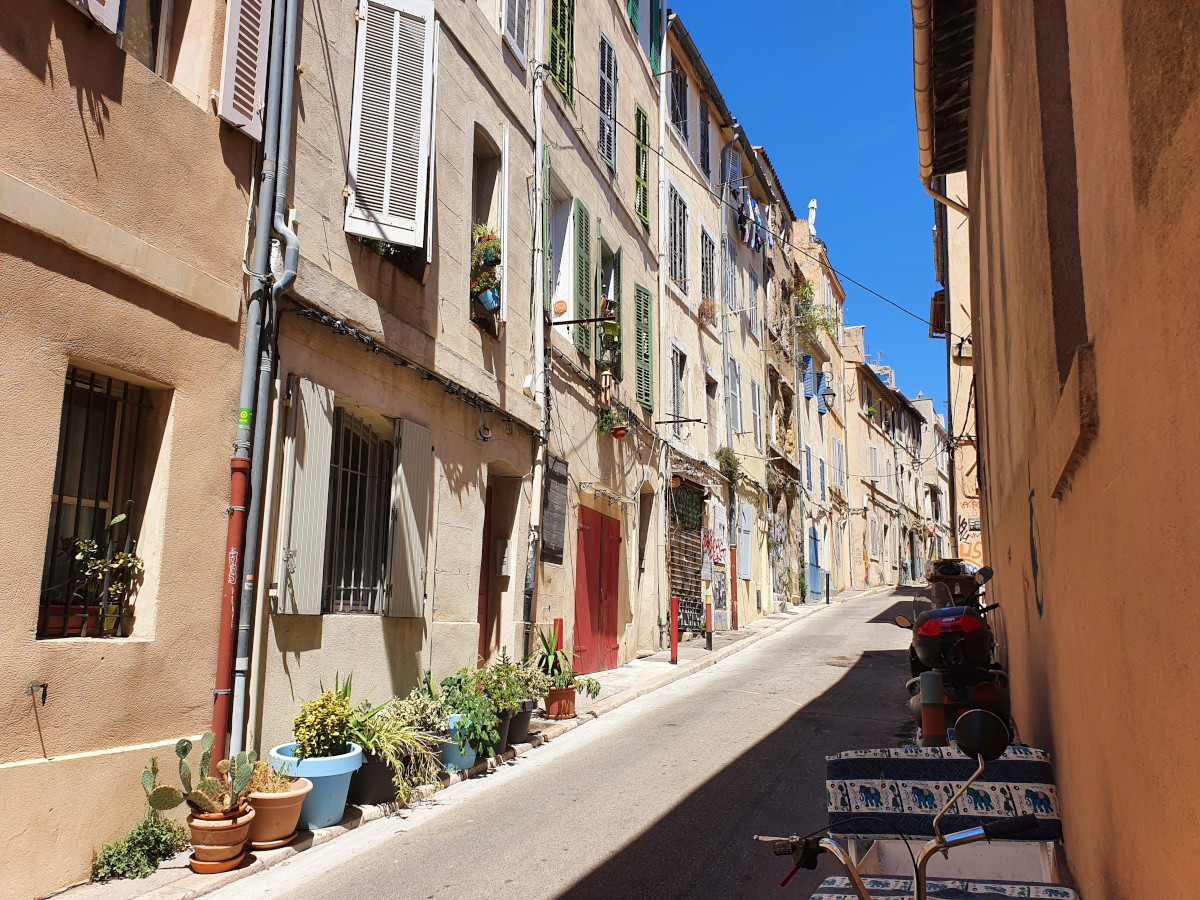
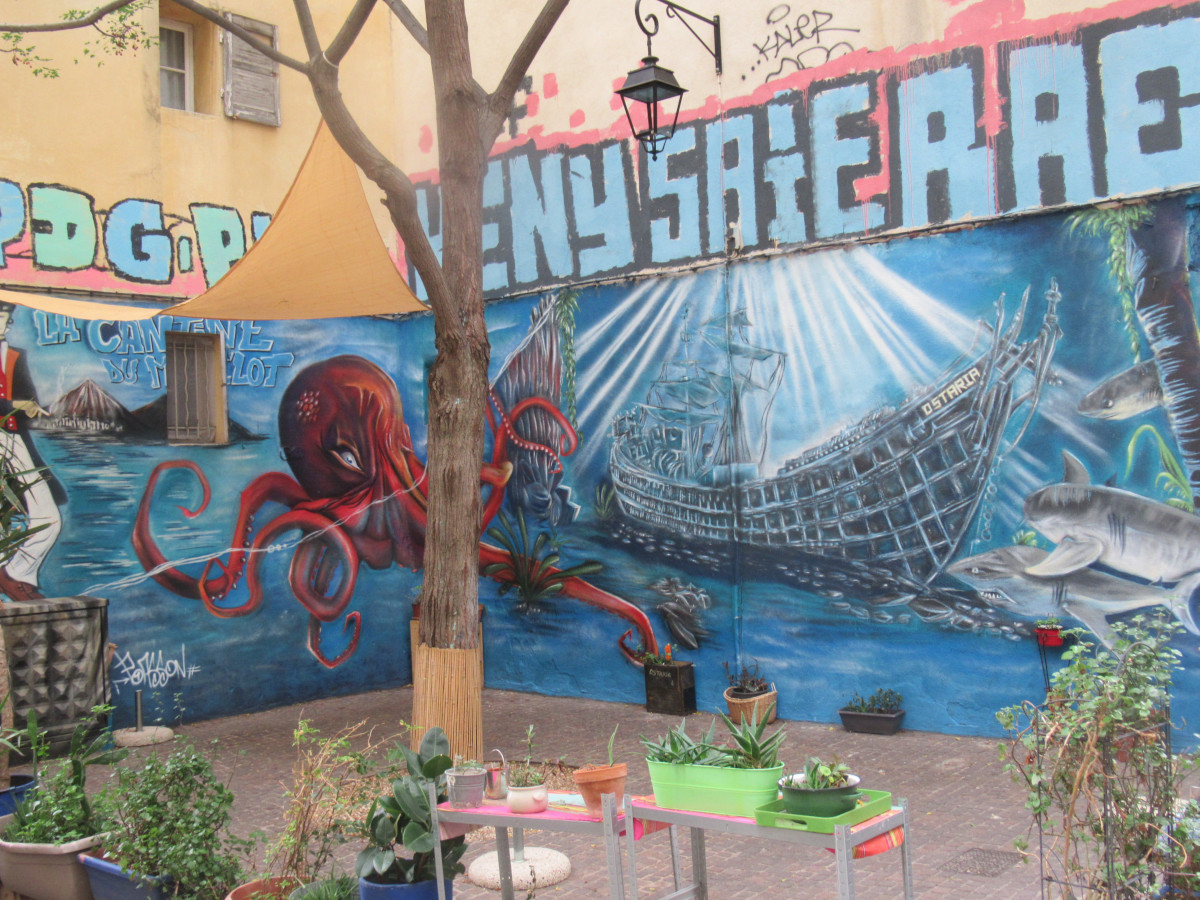
One of two main routes operated by the Petit Train (tourist train) will take you from the harbour up to Le Panier, but it’s quite straightforward to walk up various little roads and sets of steps behind the town hall side of the harbour and explore it for yourself. It’s much less of a walk than the one to Notre Dame de la Garde on the other side of the Old Port, with lots to see along the way.
Le Panier has been described as a ‘village within a city’ and it has an atmosphere all of its own. It’s often compared to Montmartre in Paris, being up on a hill and a former working class district with an arty feel, but it definitely has a more Mediterranean atmosphere. Its little squares are reminiscent of Provençal villages and sometimes when you turn a corner you will be surprised by a stunning sea view. Another local author, Jean Giono, described la Rue du Panier ‘with its crowd of sailors, its women, its brightly-clad children, its shimmering paving stones, zinc roofs ….. the road winds its way between the houses and up the hill like a snake on the move.’
a little history
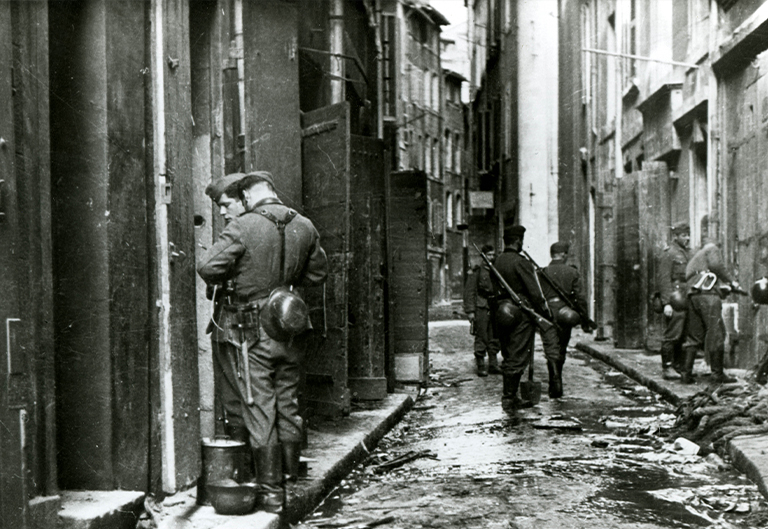

Le Panier is the oldest part of the city, first settled by the Greeks. It gradually became the city’s poor district and the place to which the many immigrants to the city tended to gravitate. In the 19th century, they were largely from Italy and Corsica and included Napoleon Bonaparte who rented a house in Rue de la Caissière while training in coastal artillery. In the 20th century, Algerians and other North Africans formed the largest group of immigrants to settle in Le Panier.
Le Panier’s World War II history was dramatic and the square named the Place du 23 Janvier 1943 recalls the dreadful day when SS regiments swept through the area announcing with loudspeakers that everyone had to leave. After a house-to-house search and the arrest of 2000 Jews who were sent to the death camps, the Germans blew up nearly 1500 buildings. The reason, they said, was Marseille’s reputation as a hotbed of crime and violence, said to be centred particularly on Le Panier. There is much more about this on the podcast, including the story of Ida Palombo, a Jewish resident of Le Panier who was denounced by her neighbours and deported.
exploring le panier
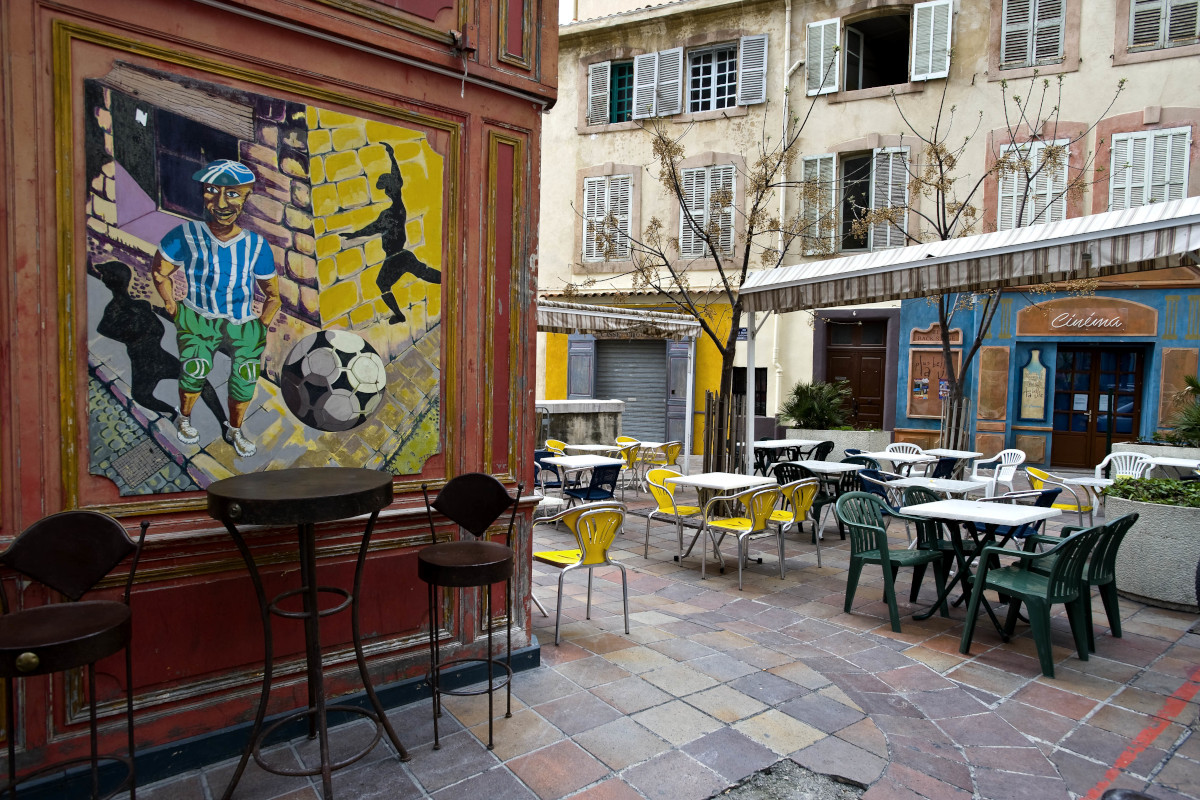
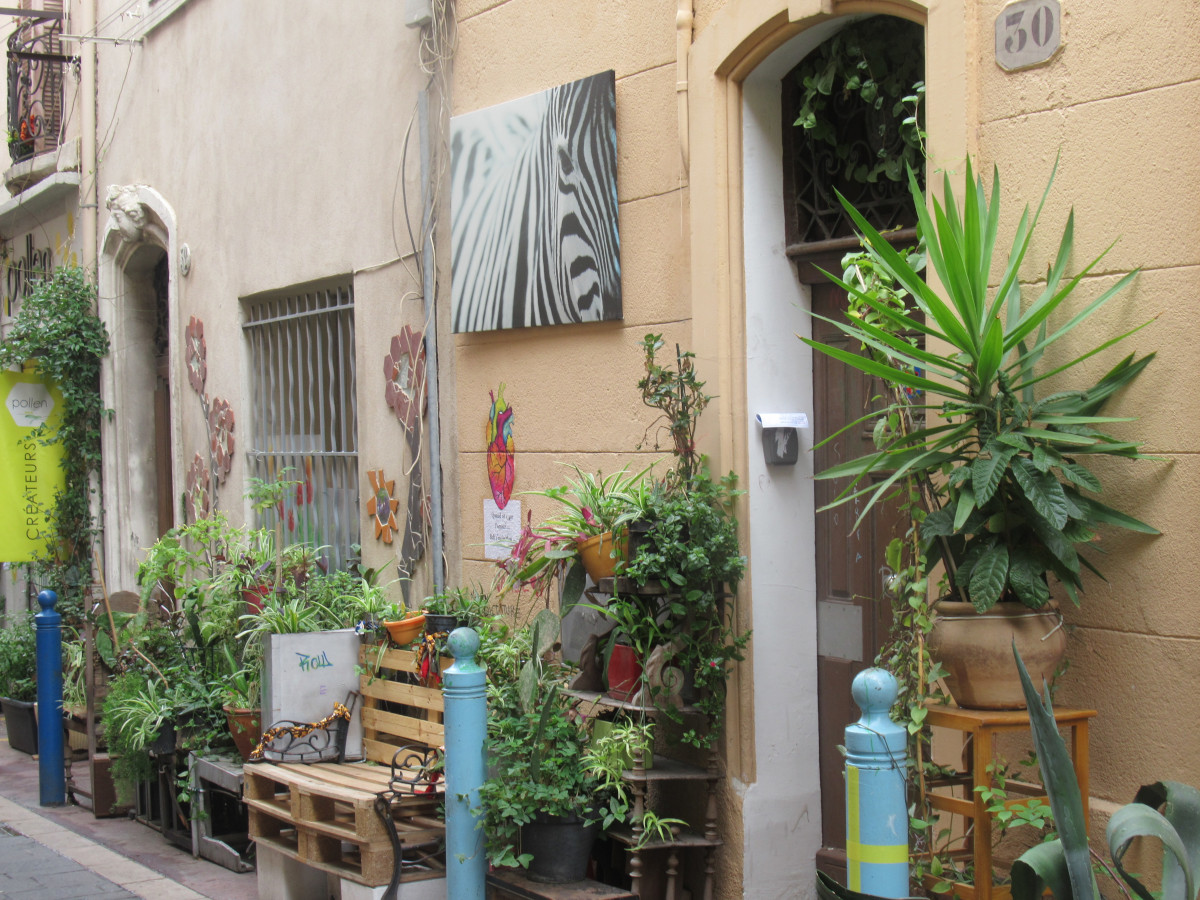
The Marseille Tourist Office offers a self-guided walk of Le Panier which takes about an hour and a half and includes sights like La Maison Diamantée, a beautiful 16th century palace with a diamond patterned façade, and some pretty churches like Saint-Laurent and the Church of Accoules. Look out too for plaques and statues which indicate the area’s history: Euthymènes, the Greek explorer who sailed the coast of West Africa, artists with a social conscience born of growing up in this impoverished district such as the artist Honoré Daumier, Victor Gélu whose inscription labels him a ‘Poet of the Marseille People’ and Jean-Louis Lagnel, creator of the first ‘santons’ (crèche figures) made in Marseille.
A key pleasure in Le Panier is just to wander and discover shady squares and stunning views. If you’re navigating yourself, try to take in the Place de Lenche, site of the original Greek ‘agora’ (marketplace), the Place des Pistoles, a larger square near the Vieille Charité and the Place des Moulins, higher up and more hidden away. Its name – a moulin is a windmill – is a reminder that the area once had 40 windmills and today it is a charming little square, reminiscent of many others in Provencal villages, with its plane trees and fountains. With luck you will chance on stunning views of Notre Dame de la Garde, of the harbour, the two forts and the Major cathedral.
The Vieille Charité
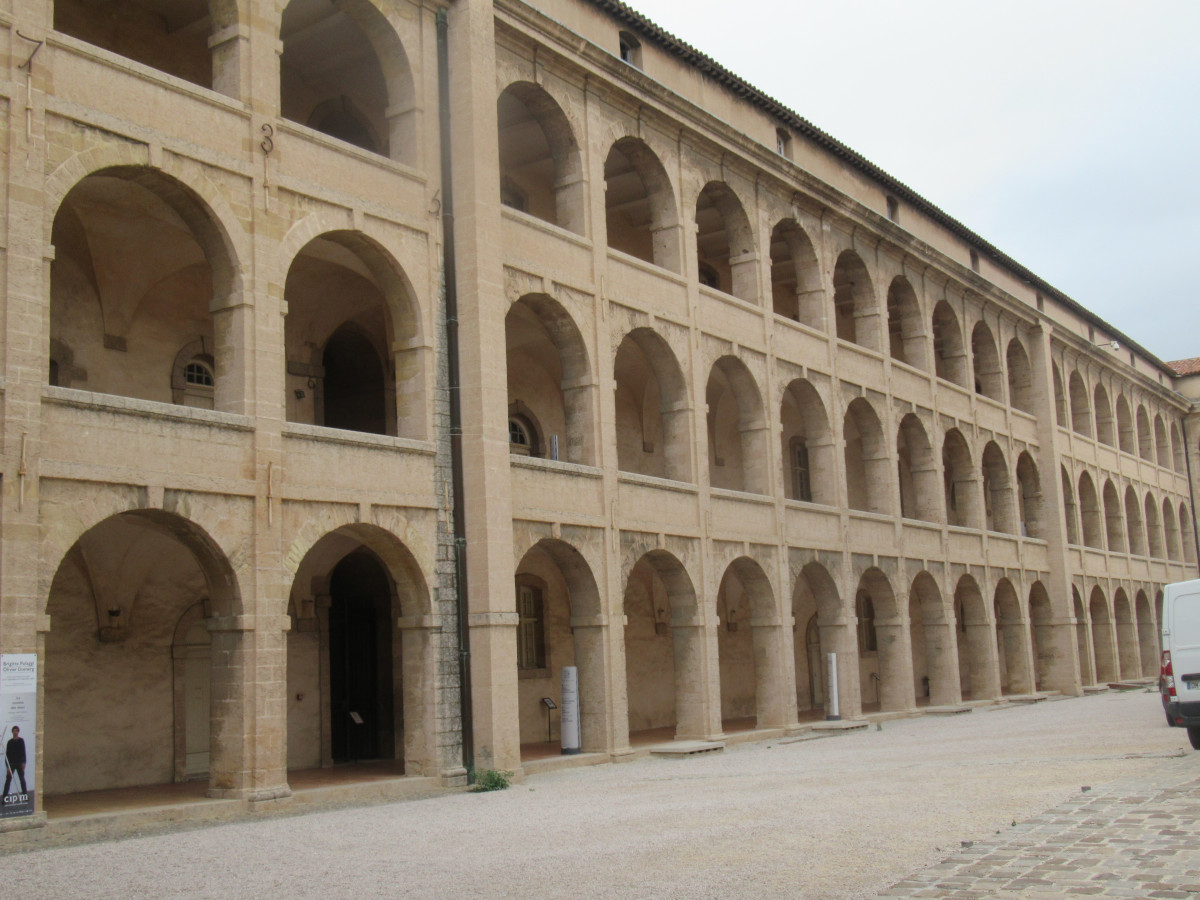
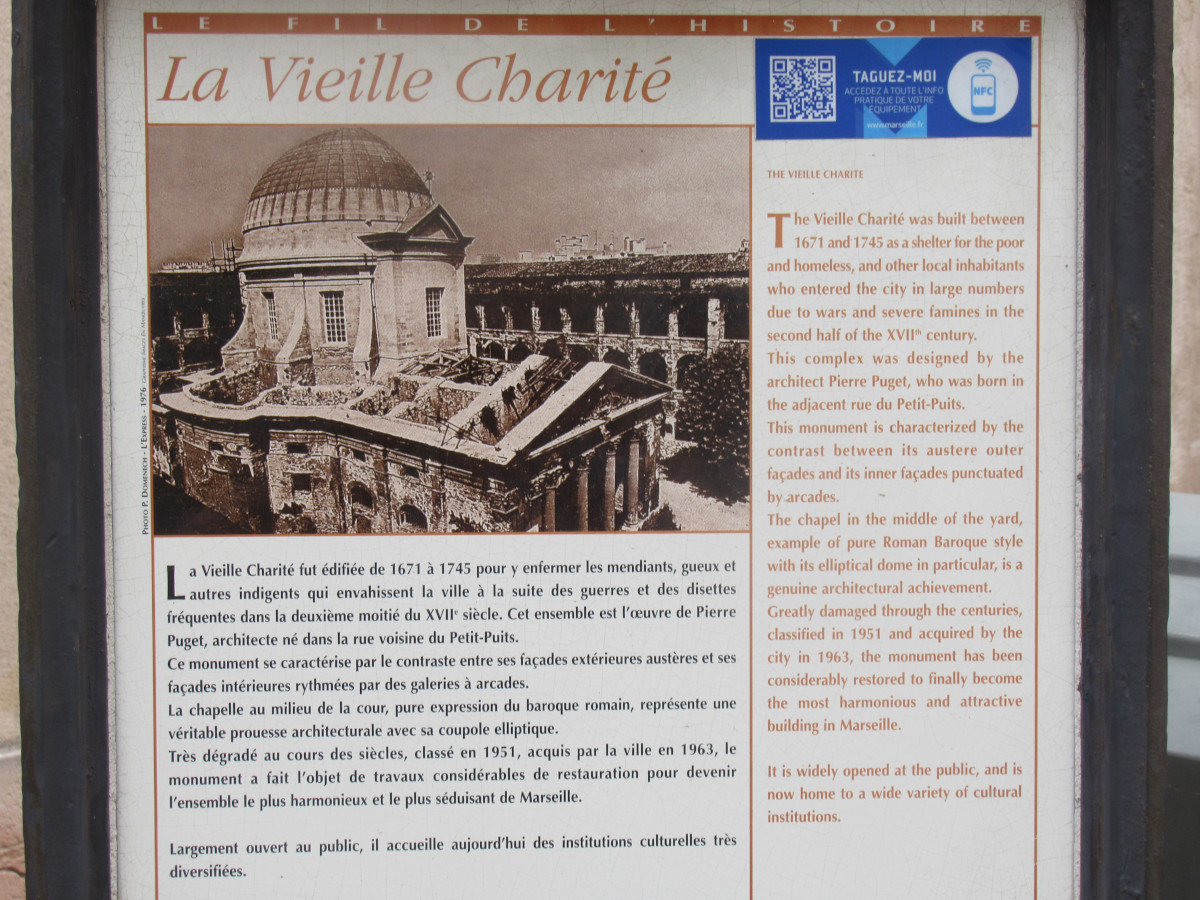

The Vieille Charité was built in the 17th century as a poorhouse, designed by the local sculptor and architect who eventually gained a national reputation, Pierre Puget. Today it houses various galleries including the Museum of Mediterranean Archaeology and the Museum of Ethnic Art, but even if you don’t visit them, do have a look around because it is a stunning sight. It’s a huge quadrangle, surrounded by elegant stone buildings with decorative archways and, in the centre, a lovely domed chapel.
In Peter Mayle’s novel, The Marseille Caper, he describes a character visiting the chapel and gives a good idea of its beauty: ‘Elena looked around at the chapel – the alcoves around the side, each with its graceful arch and marble statue, the lovely proportions of the room, the domed ceiling, the soft evening light filtering through the high windows – and let out a sigh. ‘This is magic. Why don’t we do buildings like this any more?’
The Major Cathedral
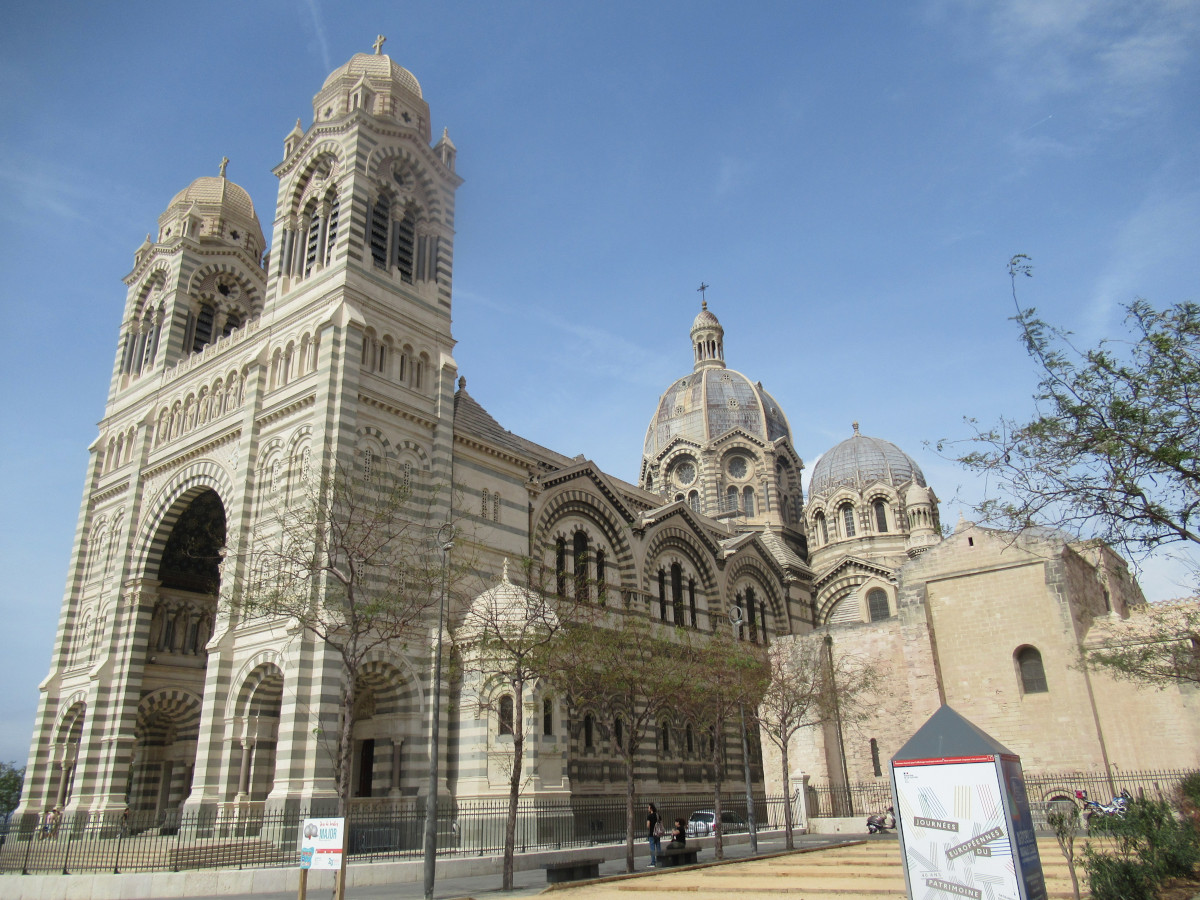
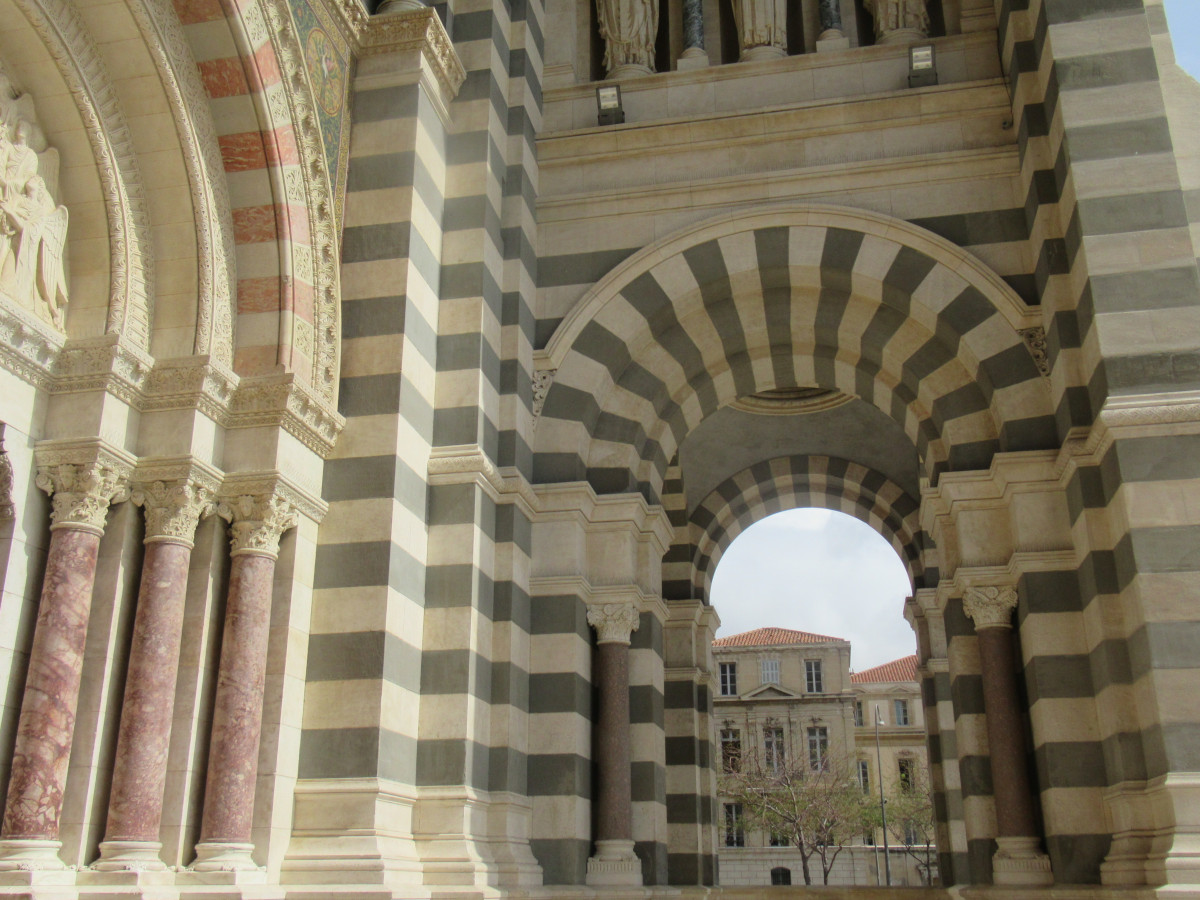
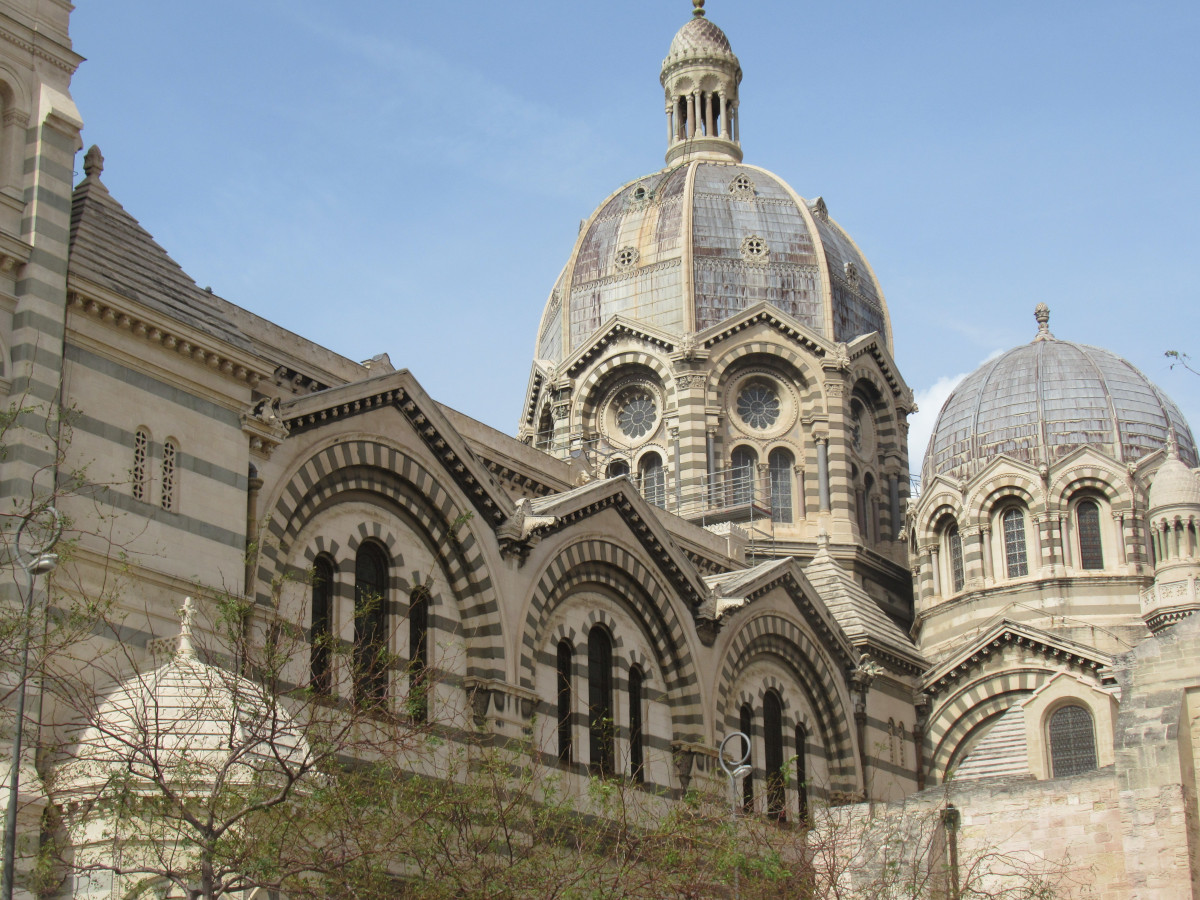
This cathedral, whose full name is la Cathédrale Sainte-Marie Majeur, is known locally simply as ‘la Major’. It was begun in the 1850s on the site of a 12C cathedral, remains of which can still be seen. Marseille invested heavily in this symbol of its new-found trade wealth and Napoleon III, no less, came to lay the first stone. It was deliberately huge enough to rival St Peter’s in Rome, seating 3,000 worshippers and sited near the new commercial port of La Joliette for all incoming ships to see, a sort of ‘spiritual lighthouse’. Its mix of styles – Romanesque and Byzantine – were deemed very suitable for Marseille’s role as the ‘Porte vers l’Orient’ or ‘gateway to the east’.
And it’s a beauty, for no expense was spared. It has 400 marble columns and eye-catching byzantine-style cupolas. The finest materials were sought – white Carrara marble from Tuscany, green marble from Florence, onyx from Tunisia, mosaics from Venice. Among the statues of Christ, Saints Peter and Paul and the Apostles, is one of Monsignor de Belsunce, Bishop of Marseille in 1720, the year when the plague devastated the city. A key date every year is 15th August, the ‘Procession of the Madonna’, when the golden statue of Mary is taken through the large crowds who gather in Le Panier to see her, hanging rosaries on her arms and presenting their children to her.
Shopping and eating in Le Panier
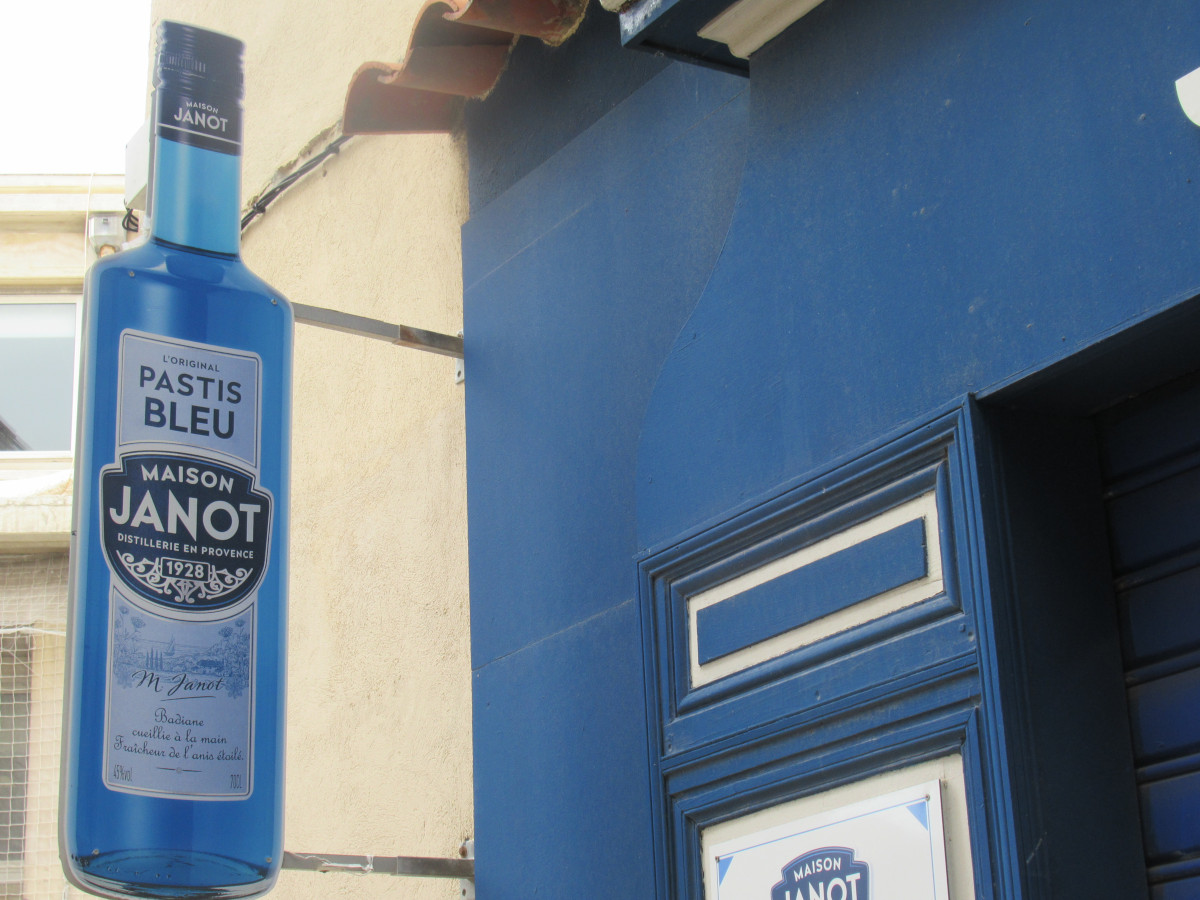
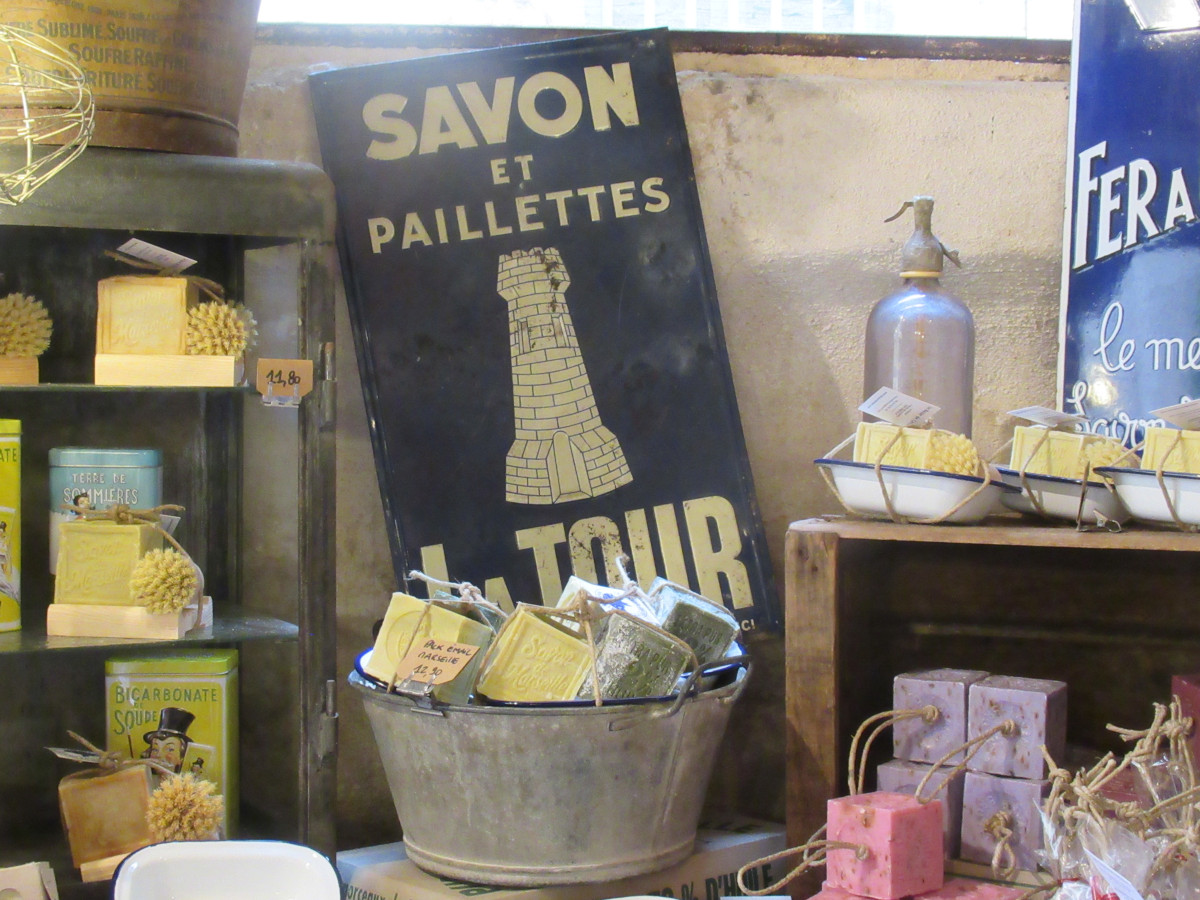

There are many little bistros and restaurants which make a delightful stopping point, perhaps to drink a glass of pastis or to choose a meal from the many different ethnic varieties on offer. Some shops sell typical Marseille products – boules, pastis, soap – and others are showcases for a wide range of artisans. Here you can browse antiques and visit clothes designers who often use ethnic fabrics and sometimes do on-the-spot alterations on request. There are art and craft shops – sometimes with a workshop attached – if it’s a painting or perhaps some jewellery or ceramics – tiles, pots, mosaics – that you seek.
street art in le panier

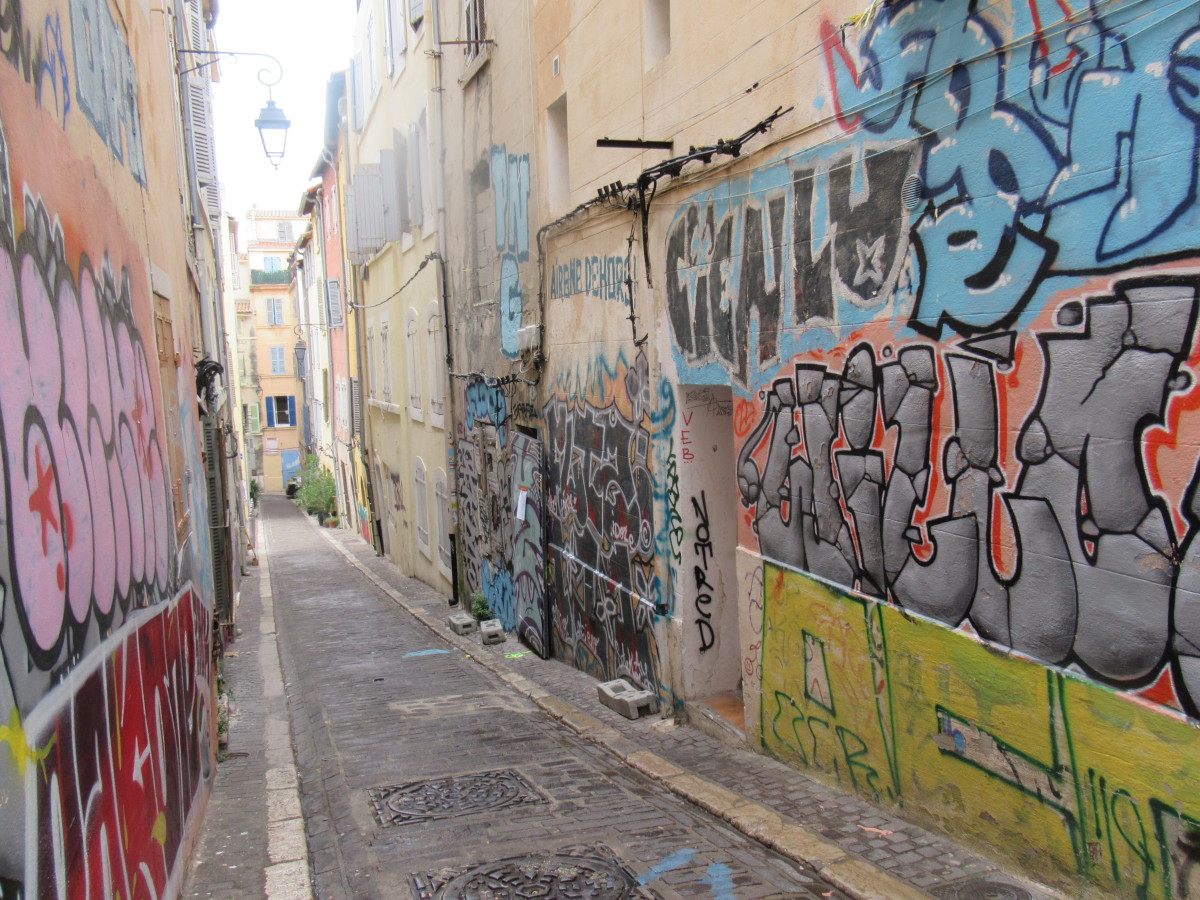
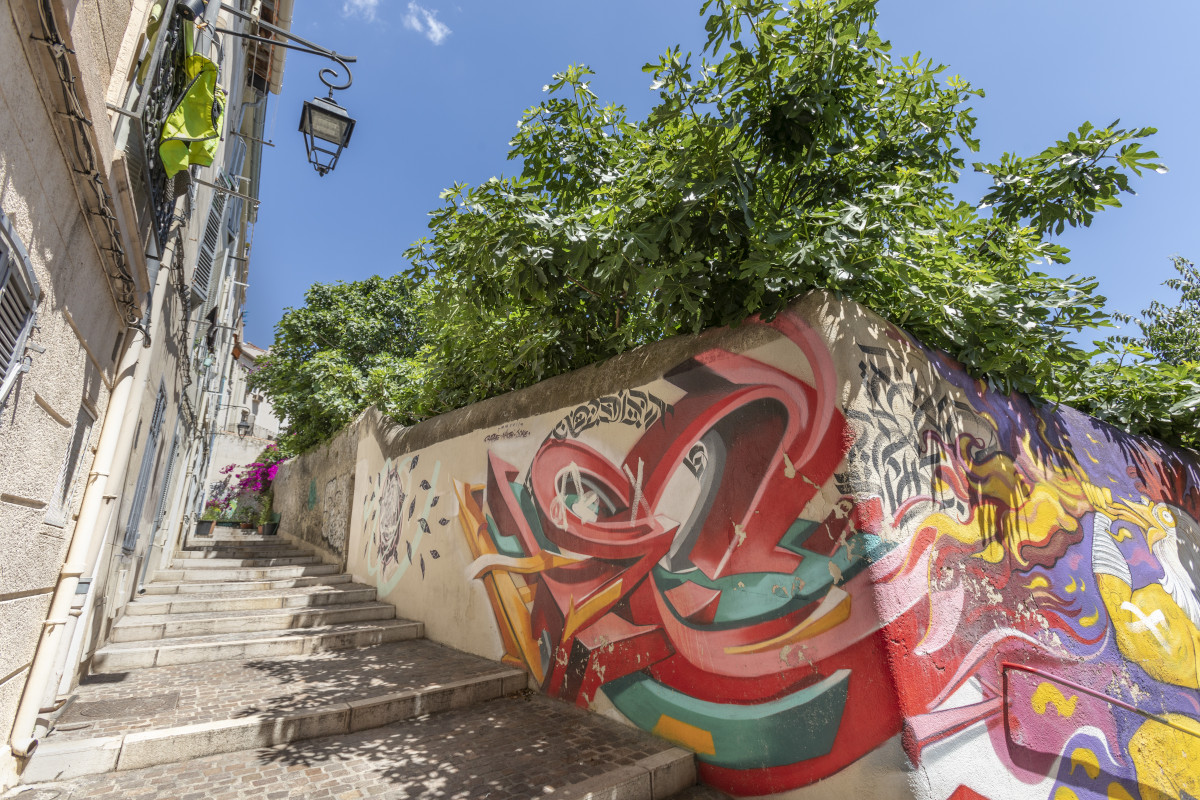
Le Panier is noted for its street art and graffiti, which you’ll find on houses and walls everywhere you look. Much of it is gritty, befitting the area’s history as an ‘outside’ place, where life was often tough. Some of it will be familiar if you are knowledgeable on street art, perhaps the work of the Brazilian artist Nhobi who settled here in 2012. But much of it has an ephemeral quality, so although you may not see any of the examples illustrated here, you will certainly find a whole range of lively images which have replaced them.
Listen to the podcast
reading suggestions
Garlic, Mint and Sweet Basil by Jean-Claude Izzo
The Marseille Caper by Peter Mayle
links for this post
Self guided walk around Le Panier
La Vieille Charité
La Major Cathedral
Blogpost: Discover Street Art in Marseille
Blogpost: Street Art and Charm in Le Panier
Previous episode The Old Port, the Canebiere and Notre Dame de la Garde
Next episode La Joliette, the Mucem and the Cosquer Museum
Last Updated on November 21, 2024 by Marian Jones





